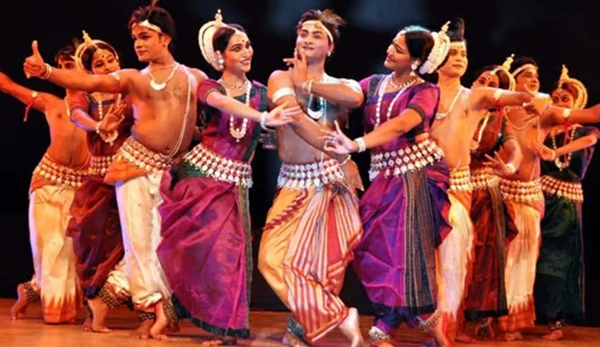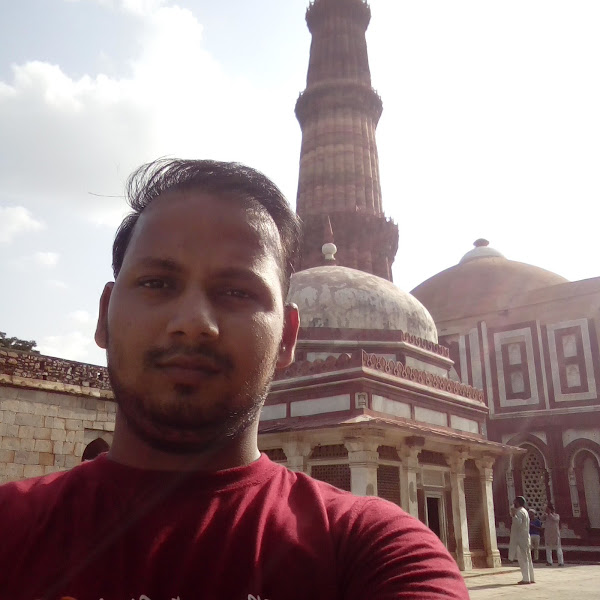Odisha, the land of temples, art, and devotion, is equally renowned for its vibrant dance traditions. The state has a glorious cultural legacy where music, dance, and rituals come together to narrate stories of gods, heroes, and common people. From the classical Odissi dance, one of India’s oldest dance forms, to energetic folk dances like Ghumura and Chhau, Odisha’s dance culture is both diverse and dynamic.
These dances are deeply interwoven with festivals, mythology, agriculture, and social life, making them living traditions rather than just stage performances.
In this article, we’ll explore the traditional and folk dances of Odisha, their origins, costumes, musical instruments, and occasions where they are celebrated.

List of Major Traditional and Folk Dances of Odisha
| Dance | Type | Region | Short Description |
| Odissi | Classical Dance | Puri, Cuttack, Konark | One of the eight classical dances of India, performed as an offering to Lord Jagannath. |
| Chhau | Folk-Martial | Mayurbhanj, Keonjhar | Martial dance with masks, depicting mythological and heroic tales. |
| Gotipua | Devotional Folk | Puri and nearby areas | Young boys dressed as girls perform devotional dances dedicated to Lord Jagannath. |
| Ghumura | Folk Dance | Kalahandi, Balangir | A war dance performed with traditional drums, symbolizing valor. |
| Danda Nata | Ritual Folk | Across Odisha | A ritualistic dance-drama performed during Chaitra month, dedicated to Lord Shiva. |
| Ranapa | Acrobat-Folk | Ganjam | Acrobat dance performed on wooden stilts, showcasing balance and energy. |
| Jhumar | Folk Dance | Western Odisha | Harvest dance performed by men and women to celebrate agrarian life. |
| Baagh Naach | Folk Dance | Sundargarh, Mayurbhanj | Dancers dressed as tigers perform to represent power and protection. |
Detailed Overview of Folk and Traditional Dances of Odisha
1. Odissi Dance
- Origin: Evolved in temples of Odisha, dating back to 2nd century BCE.
- Cultural Significance: Dedicated to Lord Jagannath; known for grace, sculpturesque poses, and storytelling.
- Costumes: Women wear Sambalpuri and Bomkai sarees with silver jewelry; men wear dhotis.
- Music Instruments: Mardala (percussion), Flute, Violin, and Cymbals.
- Occasions/Festivals: Rath Yatra, Konark Dance Festival, temple rituals.
- Image Suggestion: “Odissi dancers in temple backdrop during Konark Dance Festival.”
2. Chhau Dance
- Origin: Mayurbhanj and Keonjhar regions; martial art-based dance.
- Cultural Significance: Represents mythological tales like Ramayana and Mahabharata with martial elements.
- Costumes: Elaborate masks, colorful costumes, and warrior-like attire.
- Music Instruments: Dhol, Shehnai, Nagada.
- Occasions/Festivals: Performed during Chaitra Parva and regional fairs.
- Image Suggestion: “Masked Chhau dancers performing mythological scenes.”
3. Gotipua Dance
- Origin: Puri, performed by young boys dressed as girls, dating back to the 16th century.
- Cultural Significance: Devotional dance dedicated to Lord Jagannath and Krishna.
- Costumes: Bright saree-like costumes, heavy makeup, and ornaments.
- Music Instruments: Harmonium, Tabla, and Flute.
- Occasions/Festivals: Jagannath temple festivals, cultural events.
- Image Suggestion: “Gotipua dancers in colorful attire performing in Puri.”
4. Ghumura Dance
- Origin: Kalahandi and Balangir districts.
- Cultural Significance: Originally a war dance, later became a symbol of cultural pride and patriotism.
- Costumes: Traditional tribal attire with headgear made of peacock feathers.
- Music Instruments: Ghumura drum, Nishan, and Dhol.
- Occasions/Festivals: Nuakhai, Dussera, and tribal celebrations.
- Image Suggestion: “Ghumura dancers with drums performing during tribal festival.”
5. Danda Nata
- Origin: Ancient folk tradition linked to Shaivism.
- Cultural Significance: Devotional ritual performed to seek blessings from Lord Shiva.
- Costumes: Devotees wear saffron attire with symbolic ornaments.
- Music Instruments: Dhol, Jhanj, and Flute.
- Occasions/Festivals: Performed in the month of Chaitra (March-April).
- Image Suggestion: “Devotees performing Danda Nata ritual dance in Odisha.”
6. Ranapa Dance
- Origin: Ganjam district, performed during festivals and fairs.
- Cultural Significance: Acrobat dance showcasing courage and strength on wooden stilts.
- Costumes: Traditional attire with turbans and bright costumes.
- Music Instruments: Dhol, Flute, and Harmonium.
- Occasions/Festivals: Performed during regional fairs and folk celebrations.
- Image Suggestion: “Ranapa dancers balancing on wooden stilts.
7. Jhumar Dance
- Origin: Western Odisha, popular among farming communities.
- Cultural Significance: Celebrates harvest and social bonding.
- Costumes: Women wear Sambalpuri sarees; men wear dhotis and turbans.
- Music Instruments: Mandal, Dholak, and Harmonium.
- Occasions/Festivals: Nuakhai (harvest festival) and marriage ceremonies.
- Image Suggestion: “Farmers and women performing Jhumar dance during Nuakhai.”
8. Baagh Naach (Tiger Dance)
- Origin: Tribal regions like Sundargarh and Mayurbhanj.
- Cultural Significance: Represents power, fertility, and protection from evil.
- Costumes: Dancers paint their bodies as tigers with bamboo structures.
- Music Instruments: Drums and Nagadas.
- Occasions/Festivals: Performed during festivals and tribal rituals.
- Image Suggestion: “Dancers painted as tigers performing Baagh Naach.”
FAQs
Q1. Which is the most famous dance of Odisha?
The Odissi dance is the most famous and classical dance of Odisha, recognized worldwide.
Q2. How many folk dances does Odisha have?
Odisha has more than 20 major folk dances, including Chhau, Ghumura, Gotipua, and Danda Nata.
Q3. What is the cultural importance of Odisha’s dances?
They narrate mythological tales, celebrate agricultural life, honor deities, and preserve tribal traditions.
Q4. Are martial dances part of Odisha’s heritage?
Yes, Chhau and Ghumura are martial-based folk dances symbolizing valor and cultural strength.
Conclusion
The traditional and folk dances of Odisha are a vibrant representation of its rich cultural identity. While Odissi connects Odisha to India’s classical dance legacy, folk dances like Chhau, Ghumura, and Danda Nata celebrate rural life, devotion, and valor.
Together, these dances create a living heritage that reflects Odisha’s spirituality, tribal traditions, and social unity. Preserving and promoting them ensures that Odisha’s cultural heartbeat continues to resonate across generations.

Hello, I’m Kapil Kumar, a seasoned SEO expert and blogger at WinnersList.in. My mission is to spotlight exceptional individuals and organizations across various domains. Through curated lists, profiles, and inspiring stories, I aim to celebrate outstanding achievements and inspire the next generation of champions. Join me in this journey.
